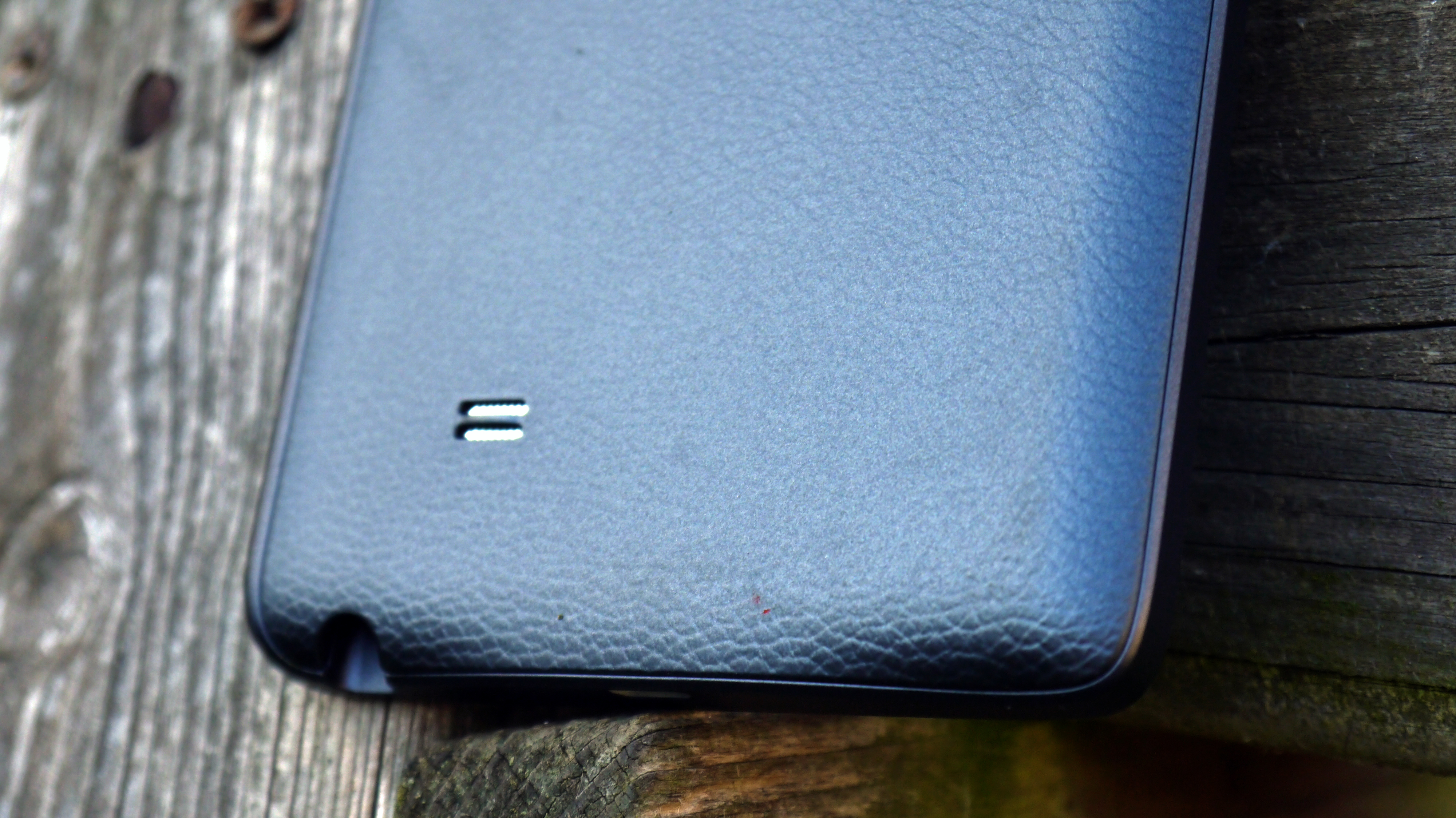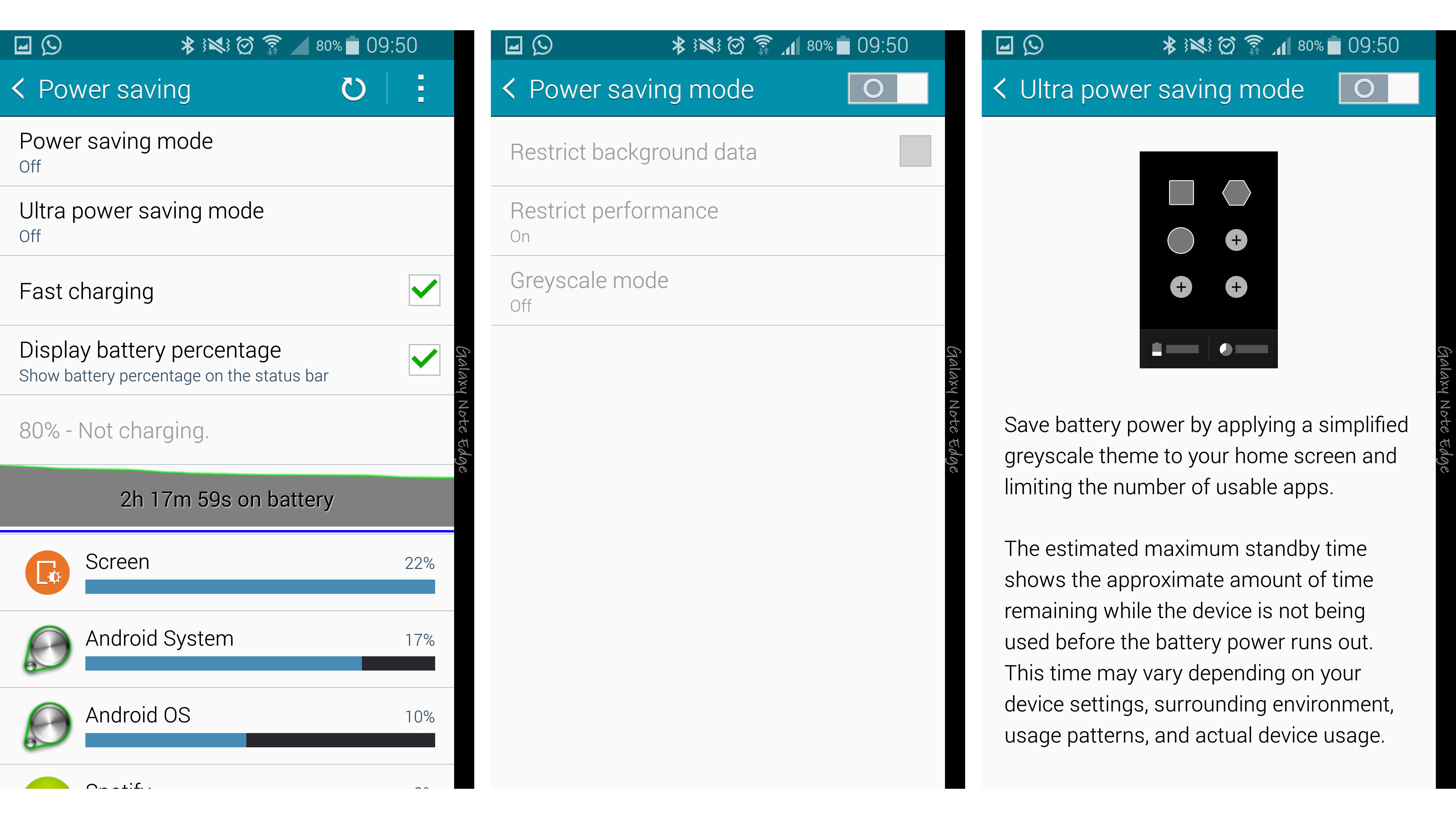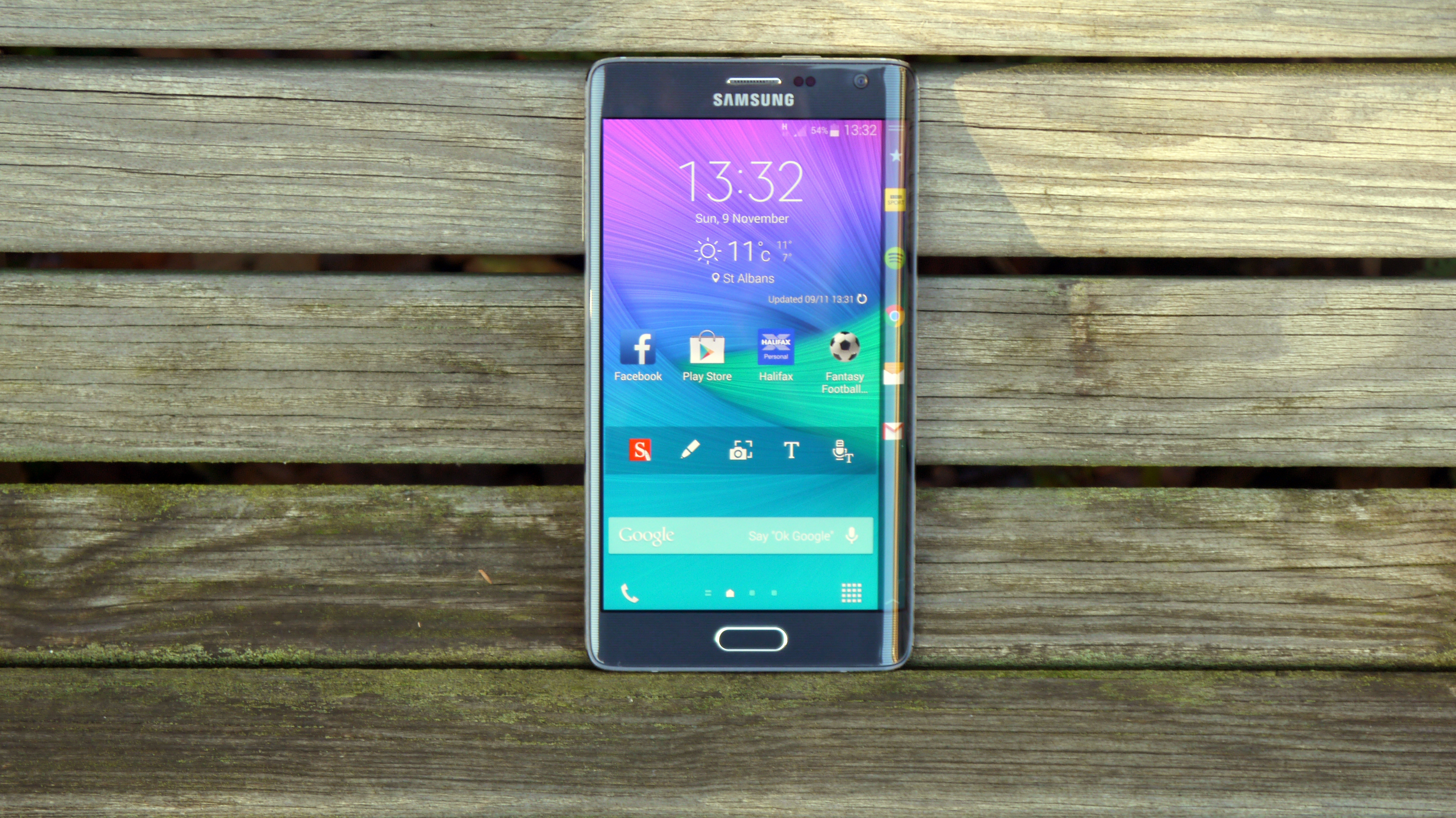Why you can trust TechRadar
The Samsung Galaxy Note Edge comes with a removable 3000mAh battery hidden behind that peel away plastic rear cover.
That's slightly smaller than the 3220mAh power pack found inside the Galaxy Note 4, and while the Edge's screen is a touch smaller at 5.6 inches (compared to 5.7) it sports the same QHD resolution, so unsurprisingly it's a bit of a power hog.
If you're looking for a big battery then the curved LG G Flex boasts a 3500mAh power unit which can last two days, although its 720p display isn't nearly as appealing as the Note Edge.
Meanwhile the 6-inch Huawei Ascend Mate 7 has a full HD display and a 4100mAh battery, making it one of the biggest available, but it is a bit of a beast in the hand.

During the early days of the review I found the battery was struggling to last to the end of the day, but after that things seemed to stabilise a little and I was just about able to get into bed with a sliver of juice left.
That said, the battery had drained to 65% between the hours of 7am and midday, with the screen and Android OS eating up the majority of life.
This drain had come from a few text messages, one phone call, emails, Spotify music, a short burst of gaming and social media activity. Nothing was particularly intensive, and in the power management screen it was a greedy Android OS getting the blame.
If you're hoping for over a day of use from a single charge though, think again and the Note Edge requires a nightly charge with moderate usage - if you're not already dashing to the charger by early evening.

Samsung told me that it does expect battery performance on the Edge to be poorer compared to the Note 4 based on the mAh capacity difference and the Edge's second screen - although the difference I saw was greater than expected. Hopefully a future software update will improve things.
The Galaxy Note Edge is far from disastrous though and in the TechRadar video test - which saw a 90 minute full HD video run at full brightness with Wi-Fi on and accounts syncing in the background - it only lost 16% of battery life.
That's actually a better performance than the Note 4 (19%) and iPhone 6 Plus (27%).
Overall I am disappointed with the battery life on the Note Edge, but it's not the worst performing and as long as you're by a plug each night it shouldn't cause too many issues.
You can extend the longevity of the battery inside the Galaxy Note Edge with Samsung's various power saving modes.
The basic offering, dubbed 'power saving mode' in settings, restricts background data and performance, and it can also change the interface to a greyscale colour scheme to save on firing up lots of lovely coloured pixels.
For more extreme action you can always engage 'ultra power saving mode', something which has featured in all of Samsung's major smartphones in 2014.
As well as reverting to greyscale and limiting various performance and data activity, this mode completely changes the interface to a simplified offering providing access to just a handful of core apps such as phone, messages, email and browser.
You also get a predicted life left reading, which if left in standby mode claims the Galaxy Note Edge could keep going for days.

TechRadar's former Global Managing Editor, John has been a technology journalist for more than a decade, and over the years has built up a vast knowledge of the tech industry. He’s interviewed CEOs from some of the world’s biggest tech firms, visited their HQs, and appeared on live TV and radio, including Sky News, BBC News, BBC World News, Al Jazeera, LBC, and BBC Radio 4.
